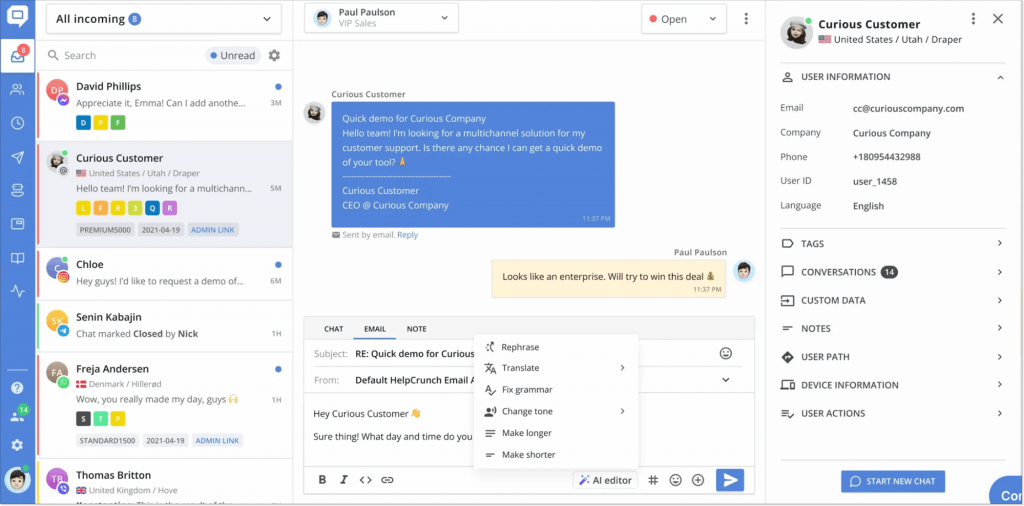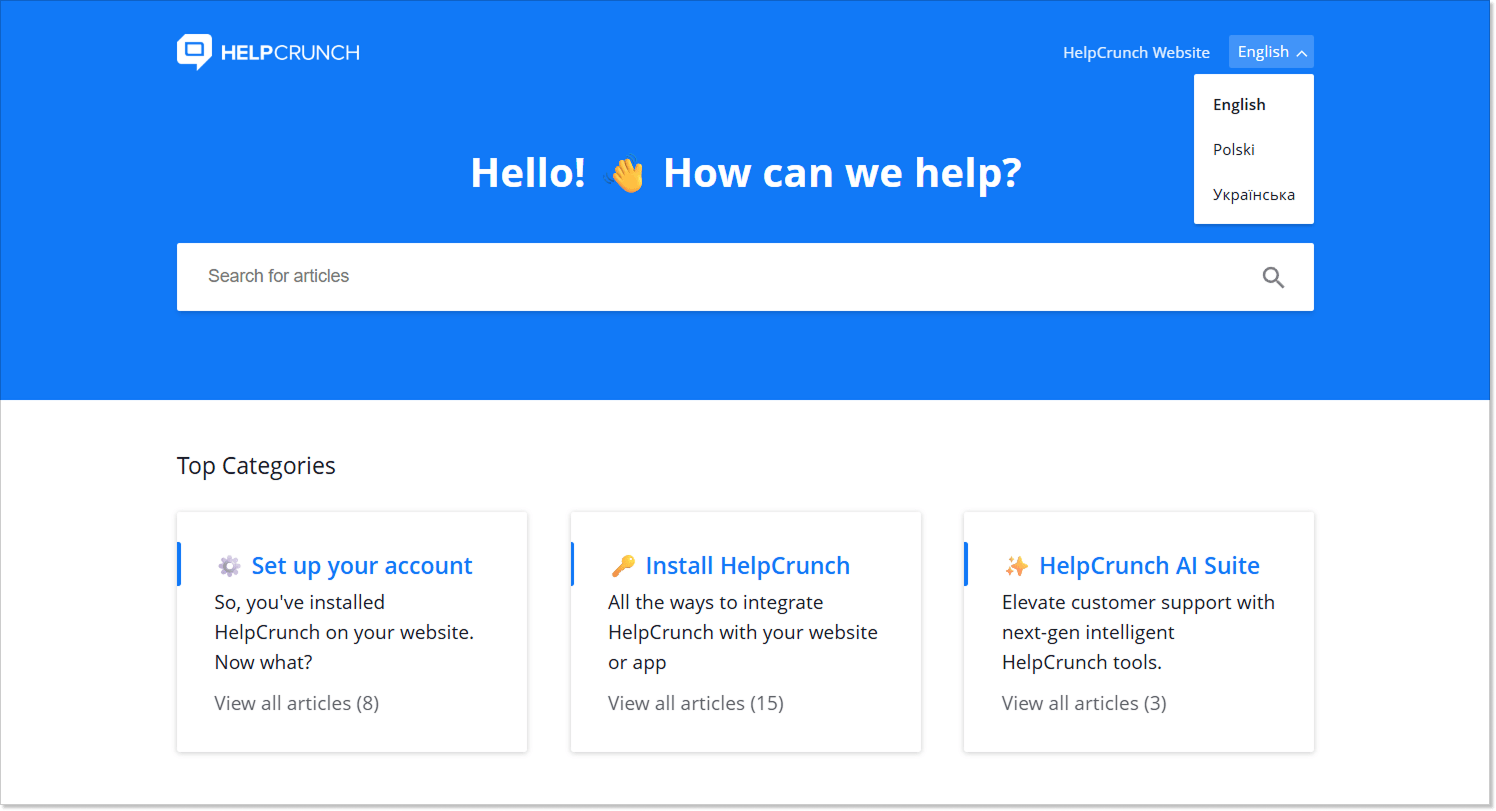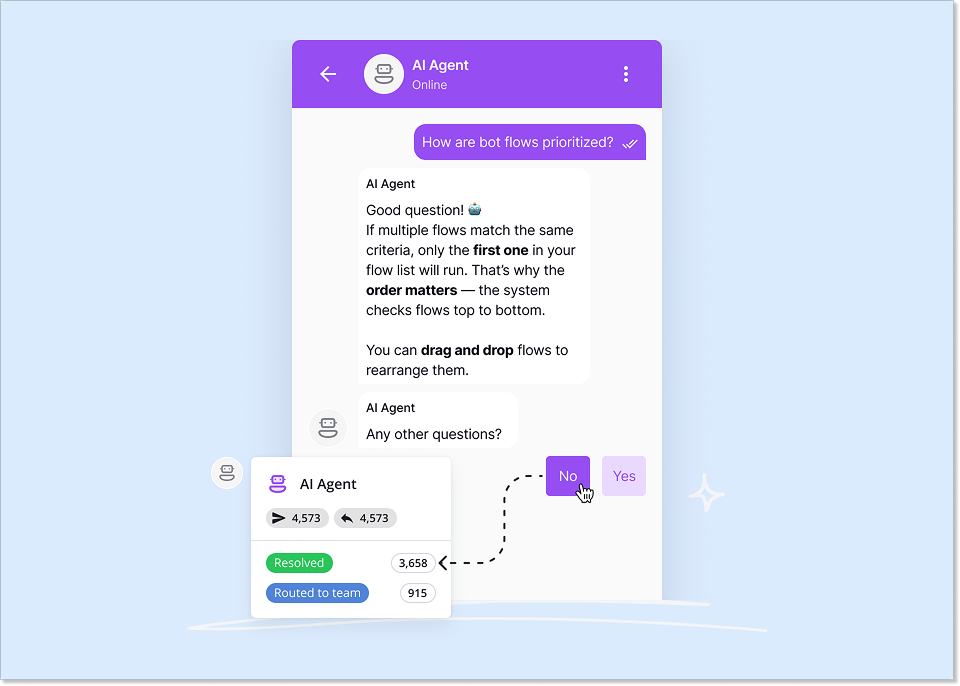‘How to’ of Multilingual Customer Support: Challenges & Best Practices
Explore the importance of multilingual support in ensuring that every customer feels heard and valued, no matter where they are.
Written by Alina Fesenko

You are here not to learn how important multilingual customer support is, but to understand it and set it up in the best way. Right? Cuz today the real challenge isn’t deciding whether to offer it (duh), but how to do it effectively, at scale, and without compromising quality.
In this article, we’ll touch on the obvious parts but mainly go beyond and look at the strategies that make multilingual support work. Thus, we are gonna learn the common pitfalls and the best practices that serve businesses well.
If you’re looking for a framework to strengthen your existing approach or validate your next steps, you’re in the right place. So.
What is multilingual customer support?
Multilingual customer support is when a business provides help to its customers in more than one language. It means offering service through all channels in the languages your customers actually speak, instead of forcing people to use only English.
It’s not solely about translation – it’s about making people feel like they belong in your customer base, no matter where they’re from.
Implementing multilingual customer support is an important part of delivering first-class customer service and achieving a high level of customer satisfaction.
Why is multilingual support important for customer experience?
A lot of companies are still behind in the global support aspect. Just to emphasize how crucial multilingual customer service really is: a CSA Research survey of 8,709 consumers across 29 countries found that 76% prefer to buy products when info and descriptions are available in their own language.
Offering support in multiple languages doesn’t just make things easier for your global customers – it makes them trust you more. They’re more likely to stay loyal to your company, come back, and tell others about you. Both you and the customer benefit.
Benefits of multilingual customer support
I mean, at this point, it has to be a no-brainer for you why is customer service important for your sales. But what benefits can you actually scoop from a multilingual approach? Well, you’ll unlock some pretty important perks, like:
- Access to more markets: Offering customer support in multiple languages will let you increase market reach.
- Higher customer satisfaction: People feel heard and respected when they see that you offer to speak in their language. This is a guaranteed customer satisfaction boost.
- Stronger loyalty: When customers know you’re making an effort, they remember it. And also, if you are the only one they can reach for support in their own language, they will just stay with you.
- Better conversions: If you are reading this, most likely you are planning to go into foreign markets. Thus, you already know, you can get more sales. In regions where English isn’t the default, multilingual customer support is a must.
- Competitive advantage: Implementing multilingual support gives you a competitive edge against those who are still stuck on English-only support.
How to set up and maintain multilingual customer support
Now that you’re aware of the importance of multilingual customer support, let’s take a look at the actionable strategies you can utilize to introduce this option to your support team.
1. Defining what languages your audiences speak
Start by identifying the languages your target audience speaks and their preferred communication channels. Determine which languages should be prioritized. To do this, conduct research or even gather focus groups. Or simply define which markets are of interest to you and check which languages are prevalent in those regions.
2. Utilizing AI and multilingual chatbots for competitive advantage
You don’t need a full human team for every language from day one. AI-powered chatbots can cover a lot of ground – handling basic questions in multiple languages, 24/7. You can still escalate complex issues to real agents, but bots are a great first step.
With technological advancements, translation services are no longer required. Customer service tools can handle translation. And the tech is getting smarter by the hour. Today, it’s not that stiff machine translation we’re used to. Look for customer service automation that offers built-in translation.
For example, HelpCrunch comes with built-in AI Agents that speak 50+ languages and can automate up to 80% of all customer queries. They are trained only on your content and successfully operate across different channels: live chat, iOS/Android, Facebook, Instagram, Telegram, Viber, and WhatsApp.
Also, our shared inbox has a built-in AI Editor that can translate, rephrase, fix grammar, and adjust your texts – right in your inbox.

3. Building a diverse support team for the global market
Despite all the benefits that AI and chatbots can provide, some things are better handled by real people. Having a team that speaks your top customer languages adds a layer of authenticity that no AI can replicate (yet). It’s especially useful for sensitive or complicated problems.
There are different ways to build such a team. You can always consider outsourcing customer service to be able to meet your customers’ expectations across various regions. It’s a good option for bigger companies that work globally and have customers all over the world. But on a much smaller scale, it’s sometimes better to find people with knowledge of the languages of the countries where your product sells the most.
4. Adjusting operating hours across geographies
If your customers are awake while your team’s asleep, you’ve got a problem. Make sure you’re offering help during your customers’ active hours, even if that means shifting schedules or hiring across regions. It’s a simple tweak that can seriously improve the customer experience.
5. Developing a comprehensive multilingual knowledge base
We know that some customers don’t like to talk much – they just want to find the answer themselves. I’m a customer like that, for example. And still, I have money and an urge to consume.
So don’t be lazy, make life for us, introverts, a bit easier by offering FAQs, how-to guides, and knowledge base articles in different languages. It saves your team’s nerves and time, and gives your customers a feeling of control (they like it, they’re gonna remember it).

6. Cross-cultural best practices to boost customer satisfaction
Even a perfect translation can fall flat if the tone or phrasing feels off. Take time to understand the cultural context and hire experts who can pick up on this nuance. For instance, what sounds friendly in English might come across as too informal in Japanese or too stiff in Spanish. Pay attention to local norms and adjust accordingly.
7. Communicate your support availability clearly
Customers don’t expect around-the-clock support across every channel and language – but they do appreciate transparency.
If you serve a global audience, keep in mind that customers in different parts of the world are ready to spend some coins at different hours. So, make it crystal clear when your support is available right away – on your website, chat, or contact page.
If something changes, like during holidays or unexpected downtime, update it fast. Simple honesty saves everyone a headache.
The most important channels to provide multilingual customer service
As companies expand into global markets, it’s important for them to look at the most popular channels in the world to provide multilingual customer support. Ideally, you should aim to have all your channels managed from one window, e.g., to have a multichannel customer support software with a shared inbox and other good stuff. Believe me, it’s worth it.
Now, let’s look at those preferred and loved by customers channels.
Live chat
Live chat is one of the most effective ways to provide real-time multilingual customer service. It enables companies to engage with customers instantly, addressing their queries and issues promptly.

Today, one of the most cost-effective options is to automate part of multilingual support with AI-powered chatbots. They can enhance live chat by offering immediate responses in multiple languages, reducing wait times, and saving you costs on hiring new employees. These chatbots can handle basic inquiries, while more complex issues can be escalated to human agents who are also equipped with AI-powered translation tools to respond in different languages.
Email remains a very popular communication channel for customer service. Ensure that your support staff have all the means to respond in clients’ preferred languages, thereby increasing satisfaction and trust.
AI tools can also be leveraged in such situations. For example, AI-driven translation tools can quickly translate email content, helping your team maintain consistency and take the workload off their shoulders.
Social media
Going to social media for customer interactions has become vital for many businesses. Providing multilingual customer service on platforms like Facebook, Instagram, X, etc., shows that you are committed to meeting their needs.
As with previous channels, AI tools can help your agents to automatically translate incoming and outgoing messages and provide quick, accurate answers. This allows your team to engage in meaningful conversations with a global audience without delay.
Help center
Your help center or knowledge base is still the most essential resource for consumers looking to solve problems on their own. Multilingual content for clients from different regions helps them easily access the information they need and thus decreases the workload on your team.
And again, AI can play an important role in this process by automatically translating knowledge base articles. Additionally, AI-powered chatbots can help clients find the right information in their preferred language much faster. This allows businesses to scale their support efforts without significantly increasing their staff. Content helps your team maintain consistency and take the workload off their shoulders.rs.
Challenges in implementing multilingual customer support
Something as complicated as building a service team and accommodating multiple languages takes effort. A few things that might trip you up:
- Cost – Localization and staffing agents aren’t cheap. Don’t be confused about it. That’s why we stress a lot on cost-effectiveness of modern AI tools.
- Consistency – Maintaining the same tone and accuracy across many languages may be resource-heavy, since a lot of material will need to be reviewed.
- Technology limitations – Not every platform handles multilingual input equally well. But at the same time, there are a lot of multilingual customer support systems that can do it.
- Time – Actually rolling out multilingual support options takes planning and patience, but the benefits of scaling are much greater, and you know it.
These are pretty realistic challenges of implementing multilingual customer service, but none of these are reasons not to do it. If you are ready to scale by going into foreign markets, you know there is a good penny in it. Start small, focus on the languages where you have the most demand, and build your customer support from there.
Measuring the performance of multilingual customer support
As with any endeavor whose results you’d like to track, the efficiency of multilingual support within your company can be measured with deep insights using the right KPIs.
When it comes to multilingual support, track things like:
- Customer satisfaction scores (by language)
- How fast does your team respond in each language
- Resolution rates and time to solve
- How often customers use your help articles (and in what language)
These metrics will tell you if your support is actually working or if something’s getting lost in translation.
In HelpCrunch, you can monitor all the important customer service metrics and analyze how efficient your customer service is.

Also, in HelpCrunch, you can set up a chat rating – this will let you measure customer satisfaction. You can compare the efficiency of chats your agents handle in their native language against chats that your agents have to translate.
This will let you understand whether your audience understands your agents and if having built-in translation is enough; you’ll have to hire local agents (native speakers) to achieve higher customer satisfaction.
The future of multilingual customer support in business
Multilingual support is a developing field, largely because of technological advancements allowing for accurate real-time translation and communication with customers in different languages (for example, auto-translated self-help material or AI chatbots).
AI will definitely play a bigger role. For example, instant voice translation during calls or chatbots that switch languages based on who they’re talking to.
But it’s not just about the tools. The future is about being truly accessible and inclusive. That means designing your entire customer journey, support included, with global users in mind from the very start.
Conclusion
Multilingual customer care is no longer optional – it’s a crucial strategy for businesses aiming to connect with a global audience. It fosters trust, enhances customer loyalty, and improves the overall customer experience.
By analyzing your customer base and implementing the right strategies – whether through machine translation, multilingual teams, or translated content – you can make it work for your company.
We hope this guide helps you create an efficient, well-trained support team that drives business growth and customer satisfaction.





